Every spring a delight awaits us in the woodland, peeking through the ground, with its unmistakable scent, leaves of wild garlic are just asking to be picked and enjoyed. Here’s our handy guide on how to identify it and where and when to go foraging. Plus cooking tips and recipe inspiration!

What is it?
Wild garlic is a wild relative of the onion plant. It is native to Europe and scientifically known as Allium Ursinum. In England it is known by the common name Ramsons. And in Germany and Austria it is called Bärlauch, literally meaning Bear Leek.
Apparently the name originates from the brown bear’s fondness for digging up and eating the bulbs in the spring!
It has a delicious, fresh garlicky flavour and is one of the most popular free foods to forage in spring.

How to identify
- Leaves are bright green with a pointed shape.
- Bulbs are small and white.
- Flowers are white with a six pointed star shape, arranged on a single flower head.
- Scent is strong with a pungent garlic aroma.
The best way to identify wild garlic is by smell. Crush a leaf in your hand and the aroma should smell strongly of garlic. Be careful when using this to identify subsequent leaves, as the scent can linger on your hands, and lead to false identification of a poisonous lookalike.
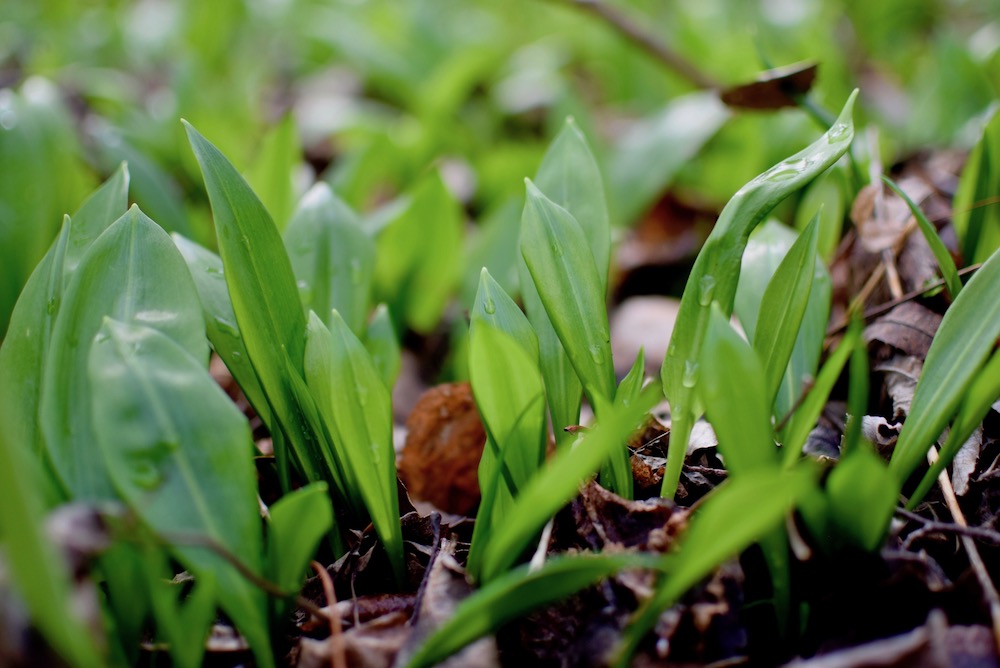
Similar plants and poisonous lookalikes
There are some similar edible plants that are sometimes also called ‘wild garlic’.
In the USA and Canada, there is a related plant Allium tricoccum which looks very similar and is also edible. It’s commonly known by the name Ramps, or Wild Leek, and is a wild delicacy and threatened plant.
There is also Allium triquetrum, which is native to the Meditteranean region of Europe and Africa. It’s commonly called three cornered garlic or three cornered leek, because of the triangular shape of its stem.
Wild Garlic vs Lily of the Valley
The most common lookalike which you should be careful of when foraging is Lily of the valley, Convallaria majalis, which is highly poisonous. When flowering they are easy to tell apart - Lily of the valley has white bell shaped flowers, not stars like Ramsons. But earlier in the season, the leaves are remarkably similar.
Look for the distinguishing feature that wild garlic Allium ursinum has leaves which form at the base of the plant, whereas Lily of the Valley can have two or more leaves on a stem split further up the plant.
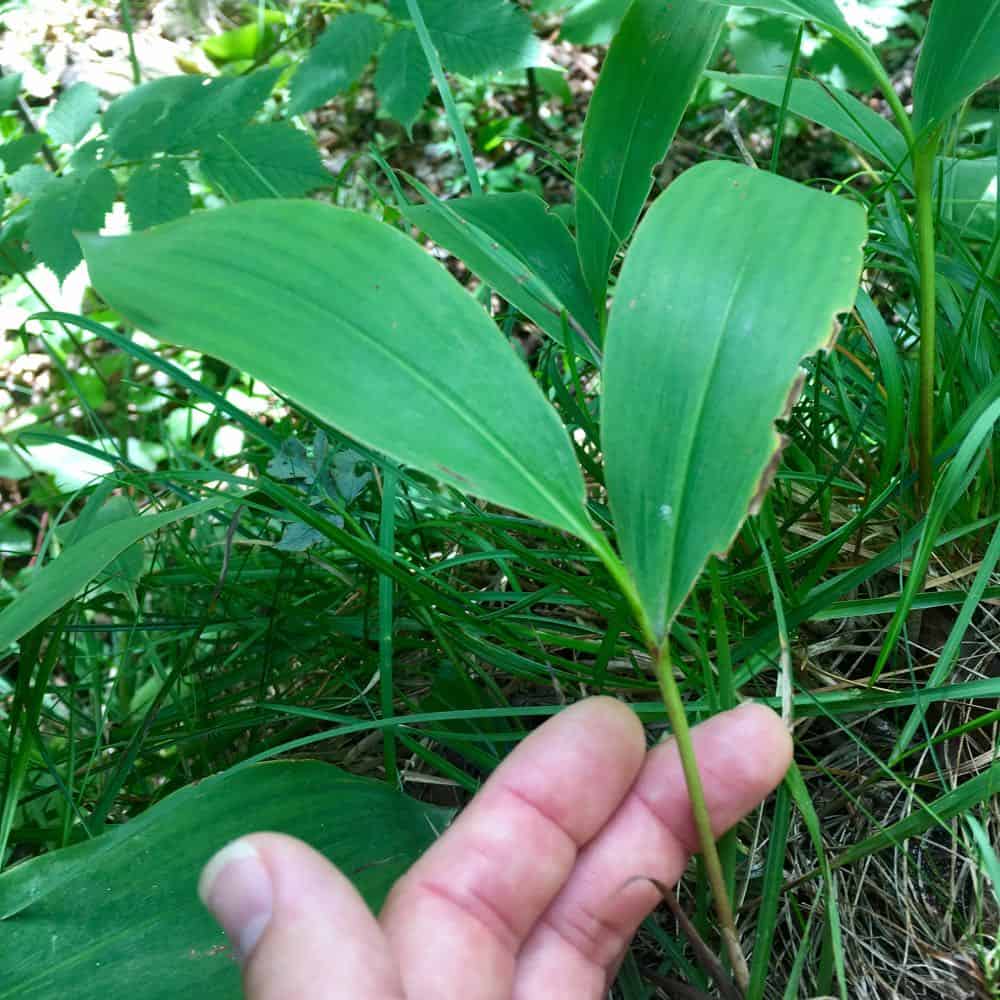
The best way to identify Allium ursinum is to follow your nose – the leaves smell strongly of garlic. Just make sure the smell is coming from the leaf you are trying to identify, and not lingering on your hands from some previously crushed wild garlic!
Te be absolutely sure see this guide on how to avoid mistaking Lily of the Valley for Ramsons by Paul Kirtley.
Other potential poisonous lookalikes
Wild garlic may also be confused with Autumn Crocus also known as Meadow Saffron, Colchicum autumnale. The younger leaves of Lords and Ladies, Arum maculatum, can also be a possible source of confusion.
As always when foraging, always be 100% sure that what you making a correct identification and what you pick is safe to eat.

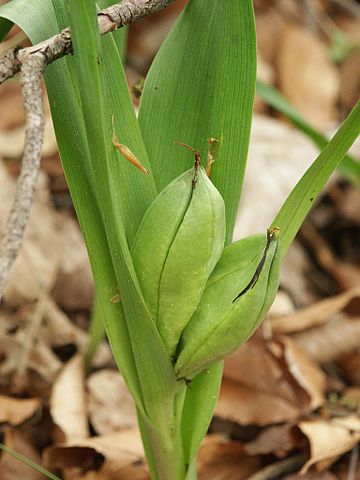
Colchicum autumnale

Arum maculatum
Where to find it
Wild garlic loves to grow in moist woodland across Europe. It especially likes ancient deciduous woodland. It grows in large patches across the woodland floor and can often be found alongside bluebells in England. It’s a pretty common plant across the countryside. Though it can be locally scarce sometimes, other places there’s so much that all you can see is ramsons covering the entire woodland floor.
We’ve personally picked wild garlic across the UK, Germany, Austria and Slovenia. Whenever we travel we’ve always got our eyes (and nose!) out for it!

What parts are edible?
The leaves are most commonly picked and eaten, but did you know that the whole plant is edible!
The bulb is edible but very small and less flavoursome, unlike cultivated garlic. When foraging we recommend leaving the bulb so that the soil is left undisturbed.
The stem can be used like you would use chives. Older stems can be a little chewy and tough.
The white flowers can be eaten too. Wash them and use as a pretty garnish to salads, soups and other dishes.
The seed pods (the green buds that form after the flowers) are edible too!
When to pick
In springtime! Peak season for picking is March and April, though it can emerge as early as February, and still be good to pick as late as June. The leaves are at their most tender and flavoursome before the plants have flowered. You usually can collect the flowers in mid Spring and the seed pods in late Spring.
How to pick
Don’t disturb the bulb when picking wild garlic, simply use scissors or your fingernails to pick a leaf at the stem.
The leaves can bruise quite easily so take a nice spacious bag or basket with you to gather them in. Emphasis on SPACIOUS, you will want plenty of this delicious wild treat to take home 😉
It usually grows in large patches so it’s difficult to take too much, but be mindful not to overpick an area.


Foraging and safety tips
- Check that the location you are foraging doesn’t have any rules making it illegal to pick, or that in the country you are in it is not a protected plant.
- Avoid picking next to the road or from frequent dog walking spots.
- Watch out for ticks, which are in season at the same time. We recommend you check yourself over after picking.
- Always wash your foraged foods very well before eating.
- Always be 100% sure that what you are picking is what you think it is and safe to eat.
Storage and preparation
Wash thoroughly before use.
You can store wild garlic leaves and flower stems in the fridge for several days. Put the stems in a jar of water to keep them fresher for longer. Don’t store in a plastic bag, as the leaves will wilt much quicker.
To freeze - wash, dry and freeze in an airtight container.
The leaves can also be dried in a dehydrator or an oven at a low temperature.

Cooking tips
Whatever you choose to make with your foraged leaves, there’s nothing quite as satisfying as a meal made with free food you have ventured out to the woods to gather.
For the most flavour, use wild garlic raw. Here are some ideas:
- Enjoy fresh leaves on sourdough bread with olive oil
- Use the large leaves instead of nori sheets to wrap sushi
- Cut the leaves and add them to mixed salads
- Make pesto
- Sprinkle the pretty flowers on top of grains and salads
- Snip the stems and use to garnish dishes like you would use chives
When cooked, wild garlic becomes milder in flavour.
It’s perfect to use just as you would use spinach. Stir it into pasta sauces, curries, red lentil dal, lasagne… Here's some of our recipes to inspire you!
Wild garlic recipes
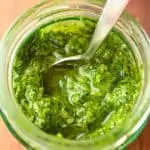


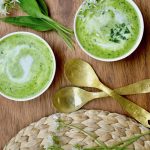
Happy foraging!
Sophie and Paul
Disclaimer: This post is intend to inspire you to forage. When foraging, you must be able to correctly identify what you are picking, otherwise you should not eat it. Never eat any wild food without multiple sources of positive identification.
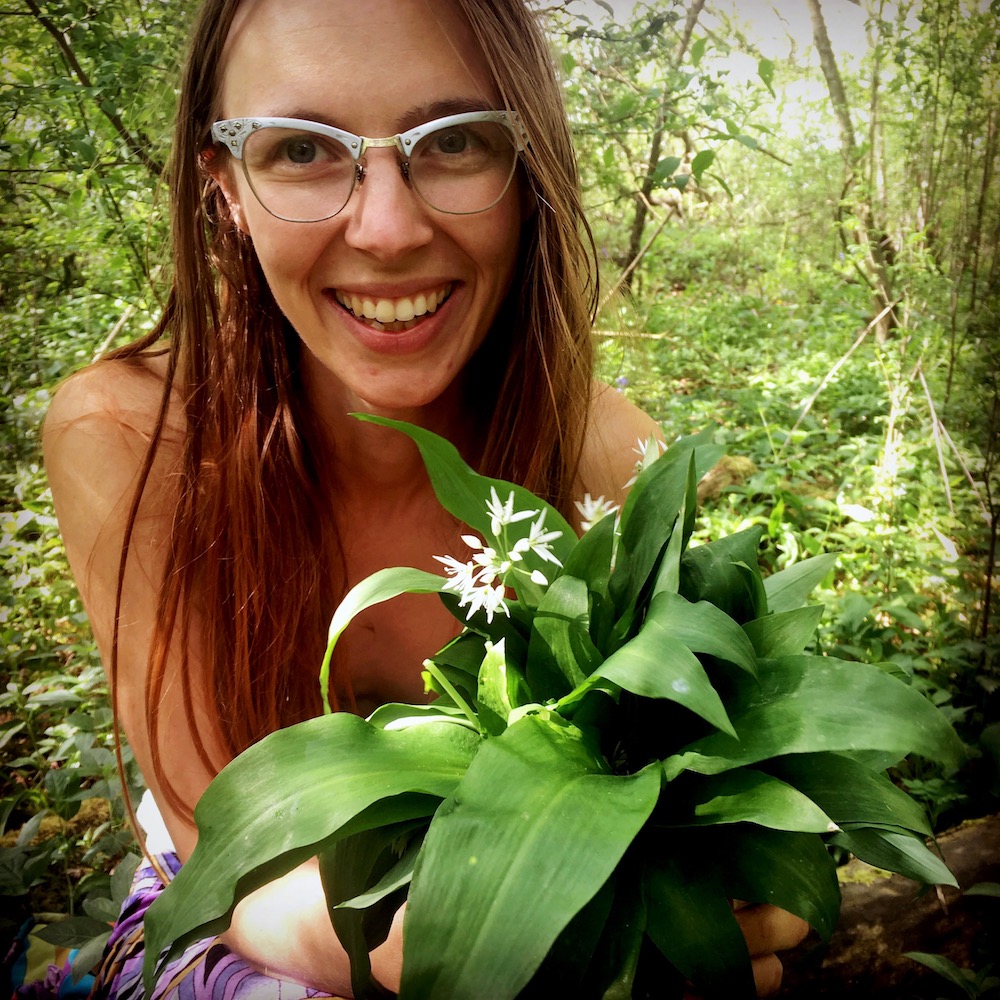



Leave a Comment & Rating